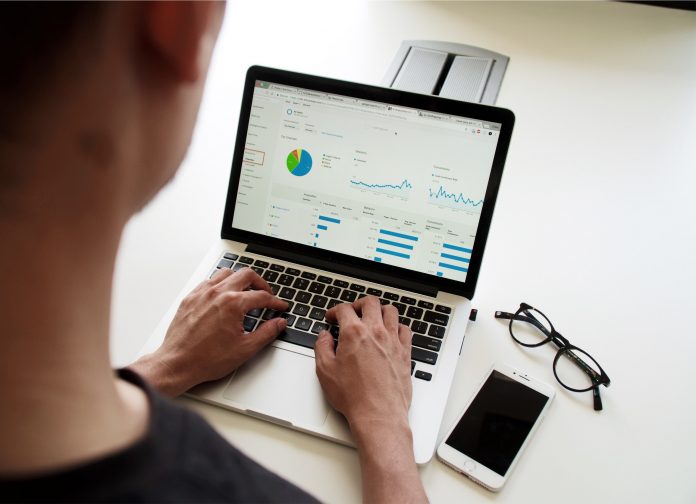
In the wake of Covid-19, an additional burden has fallen upon the finance team of organizations, this unprecedented circumstance caused all across the globe has disrupted various professions, with auditing and accounting being no exception. Remote working and mandatory lockdown measures were imposed by governments to control the spread of the virus. For auditors, this has been a huge setback as they can no longer travel to audited entity premises, nor their own offices. This is why most auditors and auditees make investments in digital capabilities so that audits can be completed remotely.
Implementing an integrated audit software helps optimize enterprise efficiency and also increase employee well-being and safety. Automating processes using audit software assists employees in easily submitting tasks related to audit requests and business requirements, it helps employees document audit conclusions and follow-up, and prompt quicker audit completion. As a result, audit software helps organizations to significantly reduce expenses and save time. Audit software has provided a positive side to the significant challenge faced by auditors, and the current pandemic has allowed several firms and enterprises to adapt to the virtualization relatively more quickly than before.
What Are The Principles Of An Audit Software?
The following principles are what makes an audit software complete:
- Timeliness: The processes must be continuously organized and inspected regarding their potential susceptibility to faults and weaknesses.
- Learning perspectives: The audit software must have the ability to describe each audit and should report the findings in detail within the context and additionally specify the progress and development needs in real time. The software must be able to accumulate descriptions related to the evidence obtained, detected vulnerabilities, or innovative opportunities, hence the auditor can recollect information even in the future.
- Source openness: The audit process necessitates an exact reference in the inspection of encrypted programs, how the administration of open source has to be acknowledged. E.g.the software must be capable of running on multiple platforms or operating systems. It also must be mobile compatible with applications in iOS or Android.
- Elaborateness: The entire audit processes should be oriented to a certain standard and must follow specifications based on regulative measures. The audit software must be able to well document the quality, scale, and effectiveness that are obtained within the audit process.
Why Does Your Business Require An Audit Software?
The increased use of automation is removing the dull day-to-day tasks and SaaS Audit tools are helping companies with quick and seamless technology adoption without any change to their existing infrastructure. Why do businesses adopt technology? It’s simple – enterprises around the country need procedures in a position to audit, track, and calibrate the inputs, outputs, and operations of every department. It is essential to evaluate how effectively all of these components of the puzzle fit together, but without a robust auditing process, there’s no way to know for sure.
Therefore making use of an Audit software might be the best bet for enterprise quality and management. It also provides a comprehensive data trail with a few clicks of a button, eliminating the need for paper records, which is not only beneficial under the current circumstance but also for the upcoming future. Instead of taking weeks and traveling to multiple auditing sites, an auditor can get the work done remotely using an audit software.
Audit Evidence Accumulation
According to the ISA 500, Audit Evidence, requires auditors to gather adequate relevant audit evidence, from which feasible conclusions are made. However, due to the current travel constraints in place auditors are restricted from traveling to audited entity premises, creating obvious challenges in accumulating evidence. The use of technology in the form of audit software, where the evidence can be uploaded in the form of images or high definition videos, which subsequently can help auditors observe inventory counts virtually.
Audit softwares are also supported by interactive web-applications and offers cross-platform mobile tools, where the evidence can be collected on both iOS as well as Android devices.
Automatic Report Generation And Checklist Creation
The uncertainty caused by Covid-19 has been anticipated to cause many auditors to incorporate an emphasis on the impact in their report or for the checklist to be spontaneously modified based on the condition of the site.
The IASB’s recent publication on IFRS 9 and COVID-19, requires auditors to generate estimates based on the most reliable available information about earlier events, prevailing conditions, and calculations of economic conditions. Using audit software enterprises can instantaneously update checklists based on the current conditions and generate automatic reports which make it easier for the auditors to stay on sync during the current uncertainty.
Improved Accuracy Through Real-time Monitoring
The traditional paper audits are not only time-consuming but restrict auditors from having evidence and reports evaluated in real-time. There is also a significant scope for human error and bias, during report generation, as the classification of a non-conformance can be vague and not relevant.
Using an audit software higher authorities can set of corrective actions and active monitoring of an auditor’s progress, helping them close down all the probable errors, thereby reducing NCs. The advantage of being able to attach evidence and monitor progress in an all-inclusive eclectic dashboard is that non-conformances can be viewed the same way by everyone, resulting in lesser inaccuracy and human error.
Audit management softwares are a significant part of success for workplace operations, especially for those within the industries like maritime, manufacturing, aviation, oil & gas, retail sector. With a conventional audit and risk management processes in place, enterprises and organizations can complete regulatory demands by interpreting workflows and the process of collecting and tracing EHS-related audits.
In conclusion, the use of technology by enterprises is improving. Innovations like the SaaS tools, cloud integration, and custom-built application provide an exceptional opportunity for enterprises to expand their use of technology for continuous auditing, monitoring, and analytics. The uncertainty in light of Covid-19 conceives challenges for management, and auditors are reminded that audit softwares are not only beneficial for the current circumstance but also for the imminent future.









